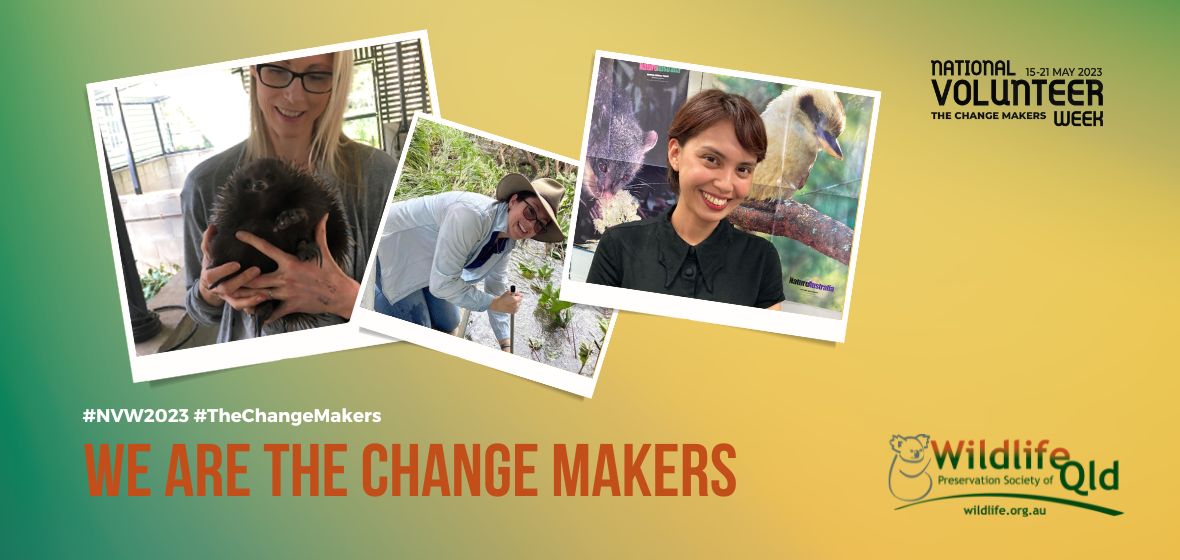
26 April 2023
With National Volunteer Week just around the corner, running from 15 – 21 May, Wildlife Queensland would like to express a heartfelt thank you to the many people who generously volunteer their time to support our organisation.
Whether it’s at our head office, branches, or community events, their dedication and valuable contributions have a meaningful and lasting impact. We are incredibly grateful for everything our volunteers do to help Wildlife Queensland and Queensland’s native wildlife.
Among our latest volunteers is Dr Kate Dutton-Regester, a wildlife researcher with extensive experience in animal conservation, care, and research, working with a range of animals, including elephants, possums, koalas, and cows.
Kate’s PhD research on the reproductive biology of the short-beaked echidna has advanced our understanding of monotreme biology and contributed to the development of assisted reproductive technologies for critically endangered species.
Wildlife Queensland EchidnaWatch
Currently, Kate is helping with our EchidnaWatch program, analysing several years of echidna sighting data to assess their distribution and abundance in Queensland. This vital information will be shared with wildlife data repositories and other organisations to aid in planning for better outcomes for echidnas.
If you’ve spotted an echidna in the wild in Queensland, please submit your sighting information to EchidnaWatch via the Sighting Form.
Top ten echidna facts
We understand Kate’s fascination with this unique monotreme as it’s one of the most fascinating mammals in existence. Here are Kate’s top 10 echidna facts:
- The echidna Is one of only two types of egg-laying mammals (known as monotremes) in the world. The other is the platypus.
- Its tongue is up to 17 cm long.
- The echidna’s scientific name, Tachyglossus means “fast tongue,” from the way the tongue rapidly darts in and out of its mouth to slurp up insects.
- It has up to 2,000 electroreceptors on its snout.
- The echidna has a low body temperature of around 30-32 °C, but this can fall as low as 5 °C.
- It has backward-facing feet for digging.
- The echidna is solitary except for the breeding season (July – September) when up to 11 male echidnas will follow a female in a ‘train’ formation.
- It has a large brain relative to other mammals.
- Its ears have no external flaps but it has excellent hearing.
- The echidna’s body is covered in sharp, 5cm-long quills for protection. The quills are not projectile or poisonous — just very sharp!
Want to know more? Head to our species profile page to find out more fascinating information about the echidna.
Working ‘For the Wildlife’
In the spirit of appreciation, we would like to share information about Kate’s Australian flora and fauna-themed products, including a beautiful range of wildlife cushion covers, which she sells under the brand, ‘For the Wildlife’. Through this initiative, she has generously donated profits exceeding AUD$ 7,500 to wildlife causes, including Wildlife Queensland.
You can purchase Kate’s cushion covers from the Wildlife Queensland shop or learn more about her products on the For the Wildlife Facebook page.
Thank you, Kate! We are lucky to have you and the many other individuals who volunteer their time to help Wildlife Queensland.
For more interviews with our volunteers, please visit our Volunteer web page.
